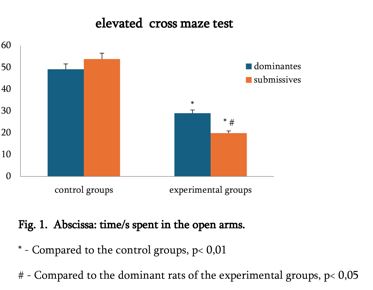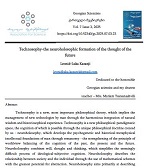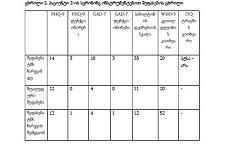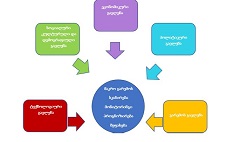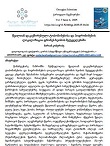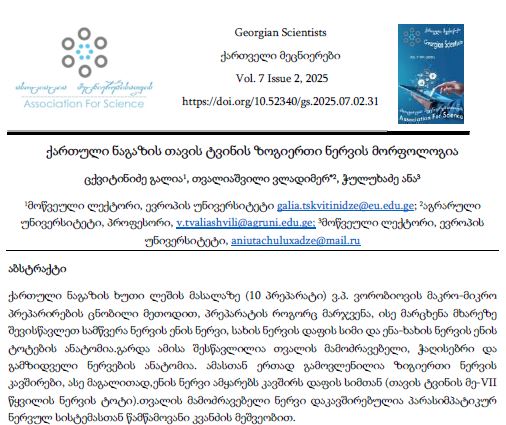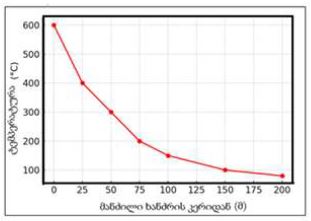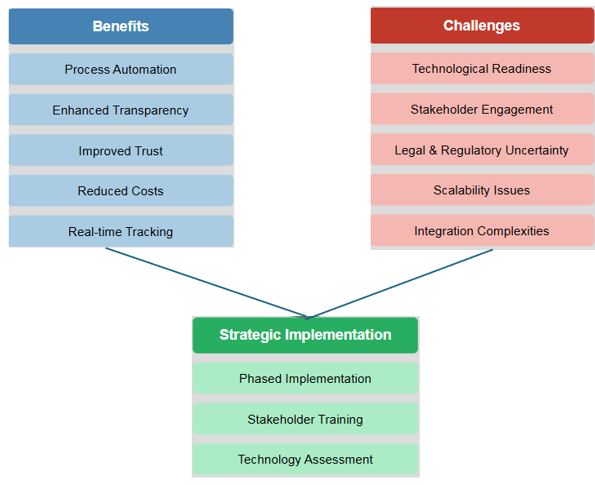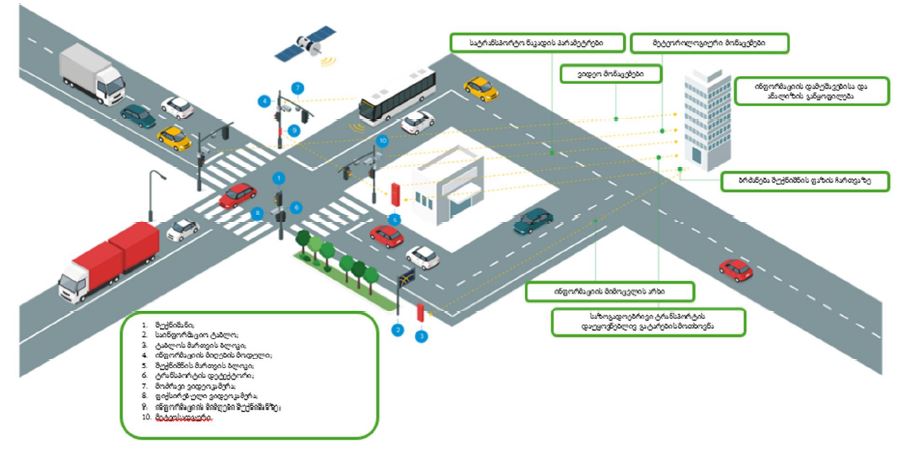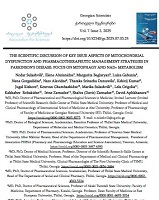Assessment of cognitive-mnestic and emotional dysfunction in post-COVID syndrome - a critical review of the literature
Загрузки
Covid-19 (coronavirus) is a highly contagious infectious disease caused by coronavirus 2 (SARS-CoV-2). The prevalence of neurological symptoms in patients with COVID-19 ranges from 9.9% to 65%. Encephalopathy, acute disseminated encephalomyelitis, cerebrovascular diseases, encephalitis, headache, pathological fatigue, dizziness, symptoms characteristic of peripheral nervous system damage, perversion of smell and taste, Guillain-Barré syndrome, other neuropathies, neuralgia, Bell's palsy may occur. In many cases (10-34%), after the acute period of the disease has passed, patients experience various symptoms for a long time, involving multiple organ systems. The combination of these symptoms has been called post-COVID syndrome. From a neurological point of view, frequent complaints are anxiety, decreased ability to concentrate, easy irritability, insomnia, depression, memory impairment. Medical professionals around the world are trying to find an explanation for the complaints that have developed to adapt various methods of treatment. Scientific research is underway to study how the virus enters the body and then affects multiple organs. Covid-19 has posed significant challenges to the healthcare systems of many countries worldwide and continues to pose a threat. Patients with prolonged COVID-19 require a team approach from doctors, joint observation by various specialists and, in many cases, a standard treatment regimen.
Скачивания
B. T. Pun et al., “Prevalence and risk factors for delirium in critically ill patients with COVID-19 (COVID-D): a multicentre cohort study,” Lancet Respir Med, vol. 9, no. 3, pp. 239–250, Mar. 2021, doi: 10.1016/S2213-2600(20)30552-X.
M. Emamikhah et al., “Opsoclonus-myoclonus syndrome, a post-infectious neurologic complication of COVID-19: case series and review of literature,” J Neurovirol, vol. 27, no. 1, pp. 26–34, Feb. 2021, doi: 10.1007/S13365-020-00941-1.
C. Deocleciano de Araujo, L. X. C. Schlittler, R. M. Sguario, D. M. Tsukumo, P. Dalgalarrondo, and C. E. M. Banzato, “Life-Threatening Catatonia Associated With Coronavirus Disease 2019,” J Acad Consult Liaison Psychiatry, vol. 62, no. 2, pp. 256–257, Mar. 2021, doi: 10.1016/J.PSYM.2020.09.007.
A. Varatharaj et al., “Neurological and neuropsychiatric complications of COVID-19 in 153 patients: a UK-wide surveillance study,” Lancet Psychiatry, vol. 7, no. 10, pp. 875–882, Oct. 2020, doi: 10.1016/S2215-0366(20)30287-X.
L. Cabañes-Martínez et al., “Neuromuscular involvement in COVID-19 critically ill patients,” Clinical Neurophysiology, vol. 131, no. 12, pp. 2809–2816, Dec. 2020, doi: 10.1016/J.CLINPH.2020.09.017.
V. Efstathiou et al., “Long COVID and neuropsychiatric manifestations (Review),” Exp Ther Med, vol. 23, no. 5, Apr. 2022, doi: 10.3892/ETM.2022.11290.
K. Ki Pang, C. de Sousa, B. Lang, and M. G. Pike, “A prospective study of the presentation and management of dancing eye syndrome/opsoclonus-myoclonus syndrome in the United Kingdom,” European Journal of Paediatric Neurology, vol. 14, no. 2, pp. 156–161, Mar. 2010, doi: 10.1016/J.EJPN.2009.03.002.
C. E. Greer, J. M. Bhatt, C. A. Oliveira, and M. J. Dinkin, “Isolated Cranial Nerve 6 Palsy in 6 Patients with COVID-19 Infection,” Journal of Neuro-Ophthalmology, vol. 40, no. 4, pp. 520–522, Dec. 2020, doi: 10.1097/WNO.0000000000001146.
H. I. Kemp, E. Corner, and L. A. Colvin, “Chronic pain after COVID-19: implications for rehabilitation,” Br J Anaesth, vol. 125, no. 4, pp. 436–440, Oct. 2020, doi: 10.1016/J.BJA.2020.05.021.
P. Venkatesan, “NICE guideline on long COVID,” Lancet Respir Med, vol. 9, no. 2, p. 129, Feb. 2021, doi: 10.1016/S2213-2600(21)00031-X.
T. Wildwing and N. Holt, “The neurological symptoms of COVID-19: a systematic overview of systematic reviews, comparison with other neurological conditions and implications for healthcare services,” Ther Adv Chronic Dis, vol. 12, 2021, doi: 10.1177/2040622320976979.
M. Butler, T. A. Pollak, A. G. Rooney, B. D. Michael, and T. R. Nicholson, “Neuropsychiatric complications of covid-19,” The BMJ, vol. 371, Oct. 2020, doi: 10.1136/BMJ.M3871.
A. Garjani et al., “COVID-19 is associated with new symptoms of multiple sclerosis that are prevented by disease modifying therapies,” Mult Scler Relat Disord, vol. 52, Jul. 2021, doi: 10.1016/J.MSARD.2021.102939.
G. Ntaios et al., “Characteristics and Outcomes in Patients With COVID-19 and Acute Ischemic Stroke: The Global COVID-19 Stroke Registry,” Stroke, vol. 51, no. 9, pp. E254–E258, Sep. 2020, doi: 10.1161/STROKEAHA.120.031208.
A. Thompson et al., “Cerebral venous sinus thrombosis associated with COVID-19,” Pract Neurol, vol. 21, no. 1, pp. 75–76, Feb. 2021, doi: 10.1136/PRACTNEUROL-2020-002678.
T. M. Tu et al., “Cerebral Venous Thrombosis in Patients with COVID-19 Infection: a Case Series and Systematic Review,” Journal of Stroke and Cerebrovascular Diseases, vol. 29, no. 12, Dec. 2020, doi: 10.1016/J.JSTROKECEREBROVASDIS.2020.105379.
M. U. Ahmed et al., “Neurological Manifestations of COVID-19 (SARS-CoV-2): A Review,” Front Neurol, vol. 11, May 2020, doi: 10.3389/FNEUR.2020.00518.
R. Mondal et al., “Meningoencephalitis associated with COVID-19: a systematic review,” J Neurovirol, vol. 27, no. 1, pp. 12–25, Feb. 2021, doi: 10.1007/S13365-020-00923-3.
A. E. Merkler et al., “Risk of Ischemic Stroke in Patients with Coronavirus Disease 2019 (COVID-19) vs Patients with Influenza,” JAMA Neurol, vol. 77, no. 11, pp. 1366–1372, Nov. 2020, doi: 10.1001/JAMANEUROL.2020.2730.
K. R. Melmed et al., “Risk factors for intracerebral hemorrhage in patients with COVID-19,” J Thromb Thrombolysis, vol. 51, no. 4, pp. 953–960, May 2021, doi: 10.1007/S11239-020-02288-0.
A. Haider, A. Siddiqa, N. Ali, and M. Dhallu, “COVID-19 and the Brain: Acute Encephalitis as a Clinical Manifestation,” Cureus, Oct. 2020, doi: 10.7759/CUREUS.10784.
Z. Khodamoradi, S. A. Hosseini, M. H. Gholampoor Saadi, Z. Mehrabi, M. R. Sasani, and S. Yaghoubi, “COVID-19 meningitis without pulmonary involvement with positive cerebrospinal fluid PCR,” Eur J Neurol, vol. 27, no. 12, pp. 2668–2669, Dec. 2020, doi: 10.1111/ENE.14536.
A. A. Usman et al., “A Case Series of Devastating Intracranial Hemorrhage During Venovenous Extracorporeal Membrane Oxygenation for COVID-19,” J Cardiothorac Vasc Anesth, vol. 34, no. 11, pp. 3006–3012, Nov. 2020, doi: 10.1053/J.JVCA.2020.07.063.
Y. H. Huang, D. Jiang, and J. T. Huang, “SARS-CoV-2 Detected in Cerebrospinal Fluid by PCR in a Case of COVID-19 Encephalitis,” Brain Behav Immun, vol. 87, p. 149, Jul. 2020, doi: 10.1016/J.BBI.2020.05.012.
J. T. Fifi and J. Mocco, “COVID-19 related stroke in young individuals,” Lancet Neurol, vol. 19, no. 9, pp. 713–715, Sep. 2020, doi: 10.1016/S1474-4422(20)30272-6.
S. D. Gallacher and A. Seaton, “Meningococcal meningitis and COVID-19 co-infection,” BMJ Case Rep, vol. 13, no. 8, Aug. 2020, doi: 10.1136/BCR-2020-237366.
N. K. Khattar et al., “Intracranial hemorrhage in a young COVID-19 patient,” Interdiscip Neurosurg, vol. 22, Dec. 2020, doi: 10.1016/J.INAT.2020.100878.
I. Z. Bin Mohamed, L. Balson, and S. Madathil, “Massive bilateral stroke in a COVID-19 patient,” BMJ Case Rep, vol. 13, no. 8, Aug. 2020, doi: 10.1136/BCR-2020-236254.
A. Vogrig, G. L. Gigli, C. Bnà, and M. Morassi, “Stroke in patients with COVID-19: Clinical and neuroimaging characteristics,” Neurosci Lett, vol. 743, Jan. 2021, doi: 10.1016/J.NEULET.2020.135564.
M. S. Phipps and C. A. Cronin, “Management of acute ischemic stroke,” The BMJ, vol. 368, 2020, doi: 10.1136/BMJ.L6983.
A. E. Gorbalenya et al., “The species Severe acute respiratory syndrome-related coronavirus: classifying 2019-nCoV and naming it SARS-CoV-2,” Nat Microbiol, vol. 5, no. 4, pp. 536–544, Apr. 2020, doi: 10.1038/S41564-020-0695-Z.
A. E. Gorbalenya et al., “The species Severe acute respiratory syndrome-related coronavirus: classifying 2019-nCoV and naming it SARS-CoV-2,” Nat Microbiol, vol. 5, no. 4, pp. 536–544, Apr. 2020, doi: 10.1038/S41564-020-0695-Z.
L. Dale, “Neurological Complications of COVID-19: A Review of the Literature,” Cureus, vol. 14, no. 8, p. e27633, Aug. 2022, doi: 10.7759/CUREUS.27633.
Y. Huang, C. Yang, X. feng Xu, W. Xu, and S. wen Liu, “Structural and functional properties of SARS-CoV-2 spike protein: potential antivirus drug development for COVID-19,” Acta Pharmacol Sin, vol. 41, no. 9, pp. 1141–1149, Sep. 2020, doi: 10.1038/S41401-020-0485-4.
C. Iadecola, J. Anrather, and H. Kamel, “Effects of COVID-19 on the Nervous System,” Cell, vol. 183, no. 1, pp. 16-27.e1, Oct. 2020, doi: 10.1016/J.CELL.2020.08.028.
S. Zaim, J. H. Chong, V. Sankaranarayanan, and A. Harky, “COVID-19 and Multiorgan Response,” Curr Probl Cardiol, vol. 45, no. 8, Aug. 2020, doi: 10.1016/J.CPCARDIOL.2020.100618.
J. G. Heckmann, S. M. Heckmann, C. J. G. Lang, and T. Hummel, “Neurological aspects of taste disorders,” Arch Neurol, vol. 60, no. 5, pp. 667–671, May 2003, doi: 10.1001/ARCHNEUR.60.5.667.
A. E. Merkler et al., “Risk of Ischemic Stroke in Patients with Coronavirus Disease 2019 (COVID-19) vs Patients with Influenza,” JAMA Neurol, vol. 77, no. 11, pp. 1366–1372, Nov. 2020, doi: 10.1001/JAMANEUROL.2020.2730.
R. Butowt and C. S. von Bartheld, “Anosmia in COVID-19: Underlying Mechanisms and Assessment of an Olfactory Route to Brain Infection,” Neuroscientist, vol. 27, no. 6, pp. 582–603, Dec. 2021, doi: 10.1177/1073858420956905.
M. S. Dhamoon et al., “Acute Cerebrovascular Events With COVID-19 Infection,” Stroke, vol. 52, no. 1, pp. 48–56, Jan. 2021, doi: 10.1161/STROKEAHA.120.031668.
J. Meinhardt et al., “Olfactory transmucosal SARS-CoV-2 invasion as a port of central nervous system entry in individuals with COVID-19,” Nat Neurosci, vol. 24, no. 2, pp. 168–175, Feb. 2021, doi: 10.1038/S41593-020-00758-5.
R. J. Perry et al., “Characteristics and outcomes of COVID-19 associated stroke: A UK multicentre case-control study,” J Neurol Neurosurg Psychiatry, vol. 92, no. 3, pp. 242–248, Mar. 2021, doi: 10.1136/JNNP-2020-324927.
C. Iadecola, J. Anrather, and H. Kamel, “Effects of COVID-19 on the Nervous System,” Cell, vol. 183, no. 1, pp. 16-27.e1, Oct. 2020, doi: 10.1016/J.CELL.2020.08.028.
S. Zaim, J. H. Chong, V. Sankaranarayanan, and A. Harky, “COVID-19 and Multiorgan Response,” Curr Probl Cardiol, vol. 45, no. 8, Aug. 2020, doi: 10.1016/J.CPCARDIOL.2020.100618.
N. Poyiadji, G. Shahin, D. Noujaim, M. Stone, S. Patel, and B. Griffith, “COVID-19-associated acute hemorrhagic necrotizing encephalopathy: Imaging features,” Radiology, vol. 296, no. 2, pp. E119–E120, Aug. 2020, doi: 10.1148/RADIOL.2020201187.
P. Boscolo-Rizzo et al., “Evolution of Altered Sense of Smell or Taste in Patients with Mildly Symptomatic COVID-19,” JAMA Otolaryngol Head Neck Surg, vol. 146, no. 8, pp. 1–5, Aug. 2020, doi: 10.1001/JAMAOTO.2020.1379.
C. Hopkins, D. L. Burges Watson, C. Kelly, V. Leary, and B. C. Smith, “Managing long covid: Don’t overlook olfactory dysfunction,” The BMJ, vol. 370, Sep. 2020, doi: 10.1136/BMJ.M3736.
R. E. A. Santos et al., “Onset and duration of symptoms of loss of smell/taste in patients with COVID-19: A systematic review,” American Journal of Otolaryngology - Head and Neck Medicine and Surgery, vol. 42, no. 2, Mar. 2021, doi: 10.1016/J.AMJOTO.2020.102889.
T. Greenhalgh, M. Knight, C. A’Court, M. Buxton, and L. Husain, “Management of post-acute covid-19 in primary care,” The BMJ, vol. 370, Aug. 2020, doi: 10.1136/BMJ.M3026.
L. Dale, “Neurological Complications of COVID-19: A Review of the Literature,” Cureus, vol. 14, no. 8, p. e27633, Aug. 2022, doi: 10.7759/CUREUS.27633.
M. Leonardi, A. Padovani, and J. C. McArthur, “Neurological manifestations associated with COVID-19: a review and a call for action,” J Neurol, vol. 267, no. 6, pp. 1573–1576, Jun. 2020, doi: 10.1007/S00415-020-09896-Z.
J. G. Heckmann, S. M. Heckmann, C. J. G. Lang, and T. Hummel, “Neurological aspects of taste disorders,” Arch Neurol, vol. 60, no. 5, pp. 667–671, May 2003, doi: 10.1001/ARCHNEUR.60.5.667.
A. A. Agyeman, K. L. Chin, C. B. Landersdorfer, D. Liew, and R. Ofori-Asenso, “Smell and Taste Dysfunction in Patients With COVID-19: A Systematic Review and Meta-analysis,” Mayo Clin Proc, vol. 95, no. 8, pp. 1621–1631, Aug. 2020, doi: 10.1016/J.MAYOCP.2020.05.030.
Copyright (c) 2024 Georgian Scientists

Это произведение доступно по лицензии Creative Commons «Attribution-NonCommercial-NoDerivatives» («Атрибуция — Некоммерческое использование — Без производных произведений») 4.0 Всемирная.
























